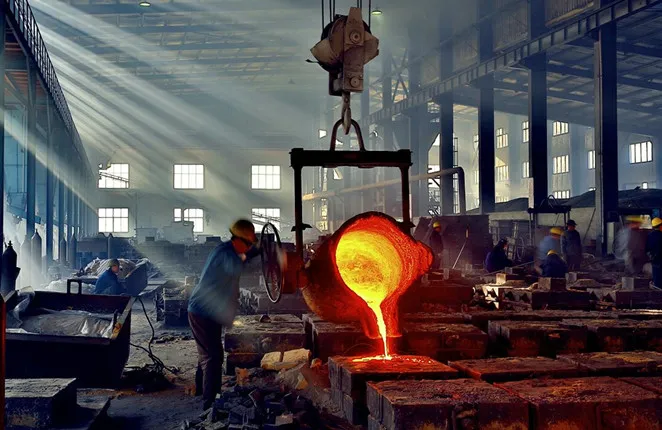Mobile:+86-311-808-126-83
Email:info@ydcastings.com
Welding Techniques for Joining Cast Iron and Steel Effectively and Efficiently
Welding Cast Iron to Steel Techniques and Considerations
Welding cast iron to steel is a challenging yet often necessary process in various industrial applications. The unique properties of cast iron and steel, combined with their differing thermal expansion coefficients and microstructures, make welding these two materials complex. However, with the right techniques and considerations, it can be successfully accomplished.
Understanding the Materials
Cast iron is primarily composed of iron, carbon, and silicon, which gives it excellent castability, wear resistance, and good machining properties. However, it is brittle and has a lower tensile strength than steel. Steel, on the other hand, is malleable and has a higher tensile strength, which makes it more suitable for applications that require load-bearing capabilities.
The difference in composition leads to varying coefficients of thermal expansion, meaning when heat is applied during welding, the two materials will expand and cool at different rates. This mismatch can lead to thermal stresses, resulting in cracks or other failures in the weld joint.
Pre-Welding Preparation
Before any welding is performed, thorough preparation is essential. Cleaning the surfaces of both the cast iron and steel components is crucial to ensure good fusion. Any contaminants such as oil, rust, or paint can hinder the welding process and lead to defects.
Additionally, it is essential to assess the type of cast iron being welded, as there are various types. Gray cast iron, ductile cast iron, and white cast iron all have different properties and can respond differently to welding. Understanding the specific type of cast iron can guide the selection of the appropriate welding filler material.
Welding Techniques
There are several techniques and methods for welding cast iron to steel, each with its own advantages and disadvantages
. A few of the most common methods includewelding cast iron to steel

1. Brazing and Soldering These processes involve melting a filler metal without melting the base materials. They can be used effectively for joining cast iron to steel when heat-sensitive properties are important.
2. Arc Welding This includes methods such as Shielded Metal Arc Welding (SMAW) and Gas Metal Arc Welding (GMAW). SMAW often employs specific electrodes designed to accommodate the differences in thermal expansion and metallurgical properties.
3. Gas welding Using an oxy-acetylene torch can be effective for joining cast iron to steel but requires a high level of skill to prevent overheating, which can make the cast iron brittle.
4. Induction Welding This is a more modern technique that uses electromagnetic induction to heat the materials. It can be beneficial due to its localized heating effect, which helps minimize the thermal stress between the two materials.
Post-Welding Treatment
After welding, it is crucial to subject the joint to post-weld heat treatment. This process involves controlled cooling and heating to relieve stresses that may have formed during the welding process. Neglecting this step can lead to cracking and failures, particularly in cast iron.
Additionally, a comprehensive inspection of the welded joint should be conducted to ensure integrity. Non-destructive testing methods such as magnetic particle or ultrasonic testing can be effective for identifying internal and surface defects.
Conclusion
Welding cast iron to steel can be a daunting task, but with proper techniques, preparation, and understanding of the materials involved, it can be done successfully. The key is to choose the right welding method, ensure thorough cleaning, and apply appropriate post-weld treatments. As industries continue to evolve, mastering these welding processes will remain crucial for engineers and welders alike who seek to create strong, durable, and effective connections between these diverse materials.
-
Why Should You Invest in Superior Pump Castings for Your Equipment?NewsJun.09,2025
-
Unlock Performance Potential with Stainless Impellers and Aluminum End CapsNewsJun.09,2025
-
Revolutionize Your Machinery with Superior Cast Iron and Aluminum ComponentsNewsJun.09,2025
-
Revolutionize Fluid Dynamics with Premium Pump ComponentsNewsJun.09,2025
-
Optimizing Industrial Systems with Essential Valve ComponentsNewsJun.09,2025
-
Elevate Grid Efficiency with High-Precision Power CastingsNewsJun.09,2025











